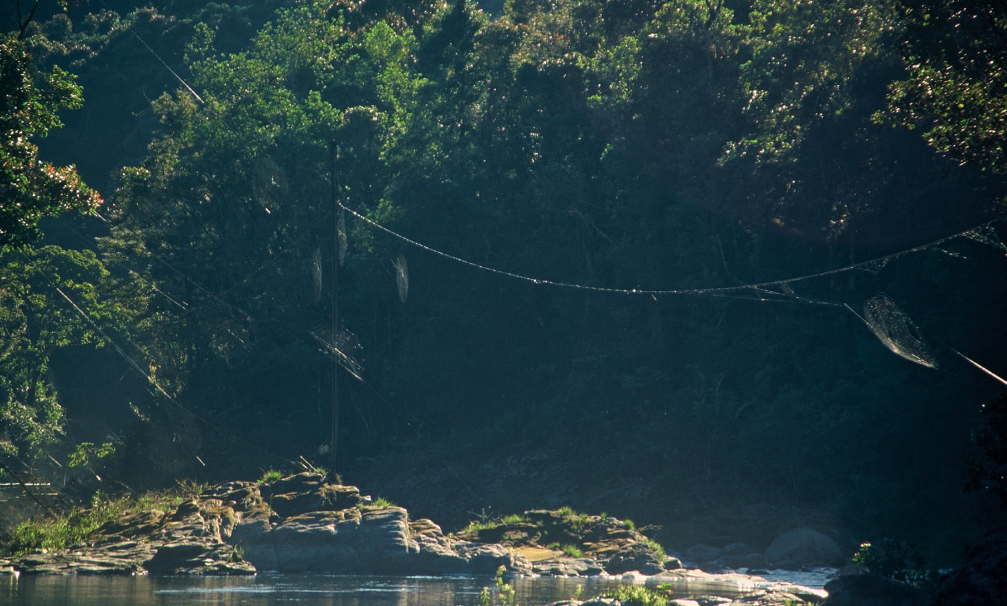In the cutthroat jungles of Madagascar, vast webs hang over the landscape’s bustling rivers, scooping up prey like industrial-strength bug-catching nets. They’re the handiwork of none other than Darwin’s bark spider. Despite the females being smaller than a human hand, this remarkable arachnid weaves webs that can stretch up to 25 meters (82 feet) across riverbanks.
First described in 2010, Darwin’s bark spider (Caerostris darwini) was named after – you guessed it – Charles Darwin, because their discovery in 2009 coincided with the 150th anniversary of On the Origin of Species. Fittingly, the spider showcases some of the strangest and most spectacular outcomes of natural selection.
They’re native to the lowland forests of eastern Madagascar. In this spider-eat-spider jungle environment, the spider will spin vast nets suspended above rivers and lakes to catch an abundance of mayflies, bees, small dragonflies, damselflies, and other flying insects.
In the study that first identified the species, the researchers reported that the spiders’ orb webs – the classic, wheel-like structures made of spider silk – can span areas from 900 to 28,000 square centimeters (140 to 4,340 square inches), reaching lengths of up to 25 meters (82 feet) across bodies of water. Remarkably, one of these webs measured up to 2.8 square meters (over 30 square feet), making it likely the largest orb ever recorded.

Several webs of C. darwini spanning a river, demonstrating their extreme length.
The silk produced by these spiders is incredibly strong. Research has shown that it is more than twice as strong as any other known spider silk and is reportedly 10 times stronger than a similarly sized piece of super-tough synthetic material like Kevlar.
This makes it the toughest biological material ever studied, according to a 2019 study. The secret lies in both the spider’s unique silk proteins and its specialized spinning anatomy. Scientists identified a new silk protein called MaSp4, which is rich in proline, an amino acid known to enhance silk’s stretchability. This protein has a distinctive structure not found in other spiders. Additionally, Darwin’s bark spider has an unusually long silk-spinning duct, which likely helps align the silk fibers more effectively, further increasing their strength.
Another fascinating trait of this web-spinning arachnid is the striking size difference between males and females, known as extreme sexual dimorphism. The bodies of females, not including their legs, typically measure between 18 to 22 millimeters (0.7 to 0.9 inches) in length, while males are less than 6 millimeters (0.2 inches). On average, females are 14 times heavier and more than twice as long as their male counterparts.
As is common in spider species where females are much larger than males, these creatures have evolved a wild sex life involving sexual cannibalism, genital damage, and even self-castration. A 2016 study on Darwin’s bark spiders found that males engage in sexual behaviors like biting off their own genitals and getting eaten by females. The super-small males also appear to have a preference for mating with younger females that have only just molted.
Most surprisingly, male spiders were seen performing oral sex by salivating on the female’s reproductive organs before, during, and after mating. This behavior is rarely seen outside of mammals, so scientists aren’t sure why they do it, but it might help the male’s chances of reproducing by signaling male quality or reducing sperm competition from other suitors.
Source Link: Darwin's Bark Spiders Spin The World's Biggest Orb Webs, Spanning 25 Meters Over Rivers